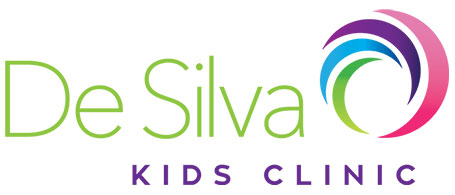Who is this treatment for?
This treatment is designed for children 6 years and younger who stutter. The children who participate in this program can have all different levels of severity for their stutter, as this does not impact the effectiveness of the treatment. It may be suitable for some older children and your trained Speech Pathologist can advise this.
What is the treatment?
The Lidcombe Program is a behavioural treatment where the Speech Pathologist indirectly treats the child’s stutter by training the parents/caregiver on how to deliver the program at home. As it is an intensive treatment, the majority of the program is required to be completed by a parent/caregiver as they spend the most time with the child.
The program teaches the parent/caregiver to ignore the child’s stutter and praise their smooth speech.
There are 2 stages of the treatment program. These are:
Stage 1: Weekly sessions with Speech Pathologist, parents/caregiver and child. Daily practice sessions at home with parent/caregiver.
Stage 2: Maintenance of reduced/no stutter at home in any environment. Attend monthly – 3 monthly appointments with Speech Pathologist to check on progress at home.
Stage 1:
The parent/caregiver and child attend weekly sessions with their Speech Pathologist. These weekly sessions are for the Speech Pathologist to train the parent/caregiver on how to provide the treatment by demonstrating various features of the program, observing the parent/caregiver providing the treatment, Speech Pathologist to give feedback on what was observed, discussing what was conducted at home during the past week and negotiating a Severity Rating of the child’s stutter for the session.
The parent/caregiver are to conduct daily practice sessions at home with the child. These practice sessions are recommended to last for 10-15 minutes and can be conducted twice a day if your Speech Pathologist recommends it. The purpose of the practice sessions are to elicit stutter free speech so that the parent/caregiver can give praise for the child’s smooth speech. Therefore, praising the behaviour we want to see (smooth speech) and changing the behaviour. This verbal praise is called Verbal Contingencies (VC) – for example, “super smooth”.
 The Speech Pathologist will guide the parent/caregiver on how to structure the practice session to achieve stutter free speech. The aim of the program and practice sessions are to achieve unstructured and conversational speech that is stutter free. Towards the end of stage 1, we are expecting the child to be stutter free – very mild stutter. Once this has been achieved over 3 consecutive weeks, then the clinician will recommend the transition to stage 2.
The Speech Pathologist will guide the parent/caregiver on how to structure the practice session to achieve stutter free speech. The aim of the program and practice sessions are to achieve unstructured and conversational speech that is stutter free. Towards the end of stage 1, we are expecting the child to be stutter free – very mild stutter. Once this has been achieved over 3 consecutive weeks, then the clinician will recommend the transition to stage 2.
Stage 2:
Stage 2 is dedicated to the maintenance of the stutter free speech/very mild stutter and this stage can last up to a year. This will consist of reducing the number of sessions with the Speech Pathologist to monthly – up to 3 monthly and training the parent/caregiver on how to identify any sign of a relapse in the stutter and how to approach this within the Lidcombe program. Sometimes this can be to return to some practice sessions at home or simply just increasing the verbal contingencies (praise) within conversation.
Once stage 2 is completed, Speech Pathologist will discharge your child from the Lidcombe Program.
However, maintenance is often lifelong for most people who stutter.
Evidence behind treatment:
Independent reviews report the evidence base for the Lidcombe Program to be the most comprehensive for early stuttering treatments. The evidence base includes children from the following countries: Australia, the United Kingdom, New Zealand, the United States, Canada, the Netherlands, Sweden, Malaysia, Kuwait, and Iran. An analysis of 134 children in a randomised controlled clinical evidence and randomised controlled trials for the Lidcombe Program showed that its odds ratio was 7.5 for attaining below 1.0 percent syllables stuttered at 6.3 months post-randomisation. This means that, at 6.3 months post-randomisation, children who received the Lidcombe Program had 7.5 times greater odds of having no stuttering or almost no stuttering than children who did not receive the Lidcombe Program.
This research shows us as clinicians and you as parents, that this program has strong evidence supporting its effectiveness for treating a child 6 years and younger for their stutter.
Written by Allie Godbold, Speech Pathologist at De Silva Kids Clinic.

